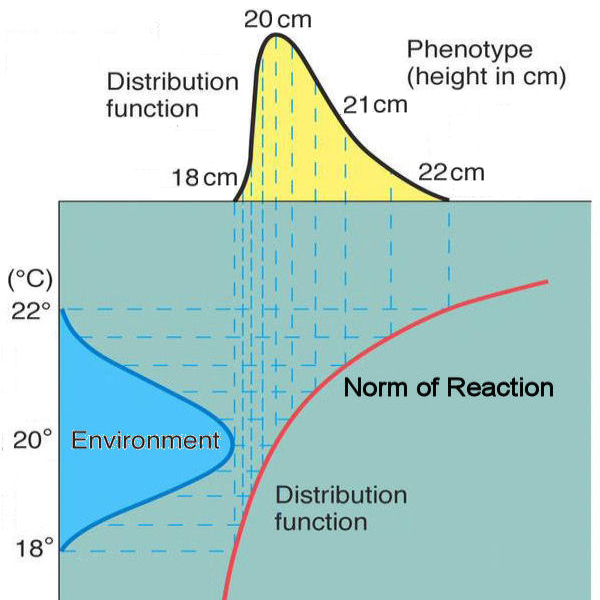
The Norm of Reaction
The
Norm
of Reaction is a conceptualization of phenotypic
variation (X-axis)
as the result of interaction of a complex genotype
over a range of environmental
variation (Y-axis). The Norm of Reaction can be
thought of as a genetic mirror that "reflects" environment
through genotype
as phenotype. The example shows the
effect of temperature on the height of a particular genotypic
variety of plant (e.g., an inbred line). The curvature of the
norm of reaction is not constant. At lower temperatures, the
curve is steep: an increase of
1.0oC from 18.0oC to 19.0oC produces a 1.5 cm
increase in average height. At higher temperatures, the curve
is shallow: a 1.0oC increase from
21.0oC to 22.0oC produces a more modest effect.
The Norm of Reaction is a population rather than an individual genetic concept. In the example, a group of plants with the same genotype raised in a greenhouse whose temperature ranges over 20 ± 2oC are expected to vary in height over a mode of 20 ± 2 cm, skewed toward taller plants. In an environmental chamber, plants raised at a constant 20oC are expected to have the modal height of 20 cm, depending on the heritability of height.
The Norm of Reaction is a population rather than an individual genetic concept. In the example, a group of plants with the same genotype raised in a greenhouse whose temperature ranges over 20 ± 2oC are expected to vary in height over a mode of 20 ± 2 cm, skewed toward taller plants. In an environmental chamber, plants raised at a constant 20oC are expected to have the modal height of 20 cm, depending on the heritability of height.